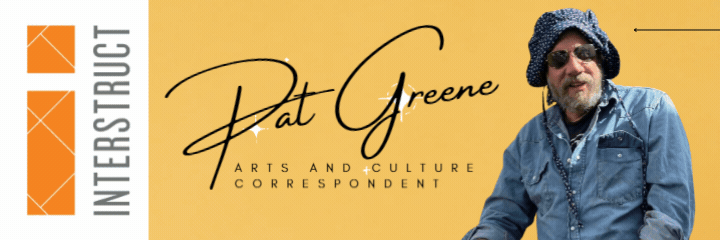Pat Greene is Bungalower Media’s first sponsored Resident Reporter. Greene has joined our team as our Arts and Culture Correspondent, supported by the efforts of Interstruct Design + Build, an award-winning Orlando-based design and build firm.

- What is Flying Horse Editions, and what is your role with Flying Horse Editions?
Flying Horse Editions (Website) is the collaborative printmaking studio and fine art print publisher at UCF. It’s a “research center for visual arts.” What that means in practice is that we have a studio that is set up to do all the traditional fine art printing techniques—relief, etching, lithography, etc.—and we have a staff of highly skilled professional printmakers who work with artists to make things that the artists couldn’t normally make alone in their studios. We then make those things in multiple, small limited editions that are sold to fund the program. The hope is that by working here, in unfamiliar processes with professional collaborators, the artists see their own work through a different lens. And that is transformative in some way. My role here is Captain of the Cheerleading Team.
- What kind of projects has Flying Horse done? Is there an everyday routine, or does that change?
Typically, projects are prints of some kind on paper, but we have made sculptural editions, prints on metal, and prints on glass. We’ve done large-scale public art projects and single, small monotypes. It really runs the gamut and depends on what the artists want to do when they’re here. The best part of my job is that every day is completely different, and the challenges of every project are always different.
- How does Flying Horse fit at UCF and the art department?
Within the structure of the university, Flying Horse Editions is a center in the College of Arts and Humanities, parallel to the art department. However, we augment the art department by offering a robust internship program where UCF students get the opportunity to assist established artists and see a professional side of the art world that isn’t taught in the classroom. I know that it is very enlightening for young artists to see the varied approaches that these artists bring to their practice. They see that there’s not just one way to be an artist.
4. How long have you been involved with printmaking, and how did you get involved?
I think I made my first etching when I was like, 6 or 7, when my aunt took us to a print studio in New Orleans. I made an etching of a man who had a cookie for a body (I was probably hungry). Later, when I went to art school, I fell in love with the printshop studio. I think I liked the comradery of that space as a change to the solitude of the painting studios. Also, I noticed that all the painters who I admired were very involved in printmaking, so I thought I should to learn it, too. I made a lot of prints in graduate school. But I was never a very good technical printer. I made a mess. I took shortcuts. My editions never matched. Thank god we have an amazing master printer, Steven Fournier, here. He came here from a very famous print studio (ULAE) in New York and has worked with an incredible roster of artists; and Emily Burch-Aiosa, who came here from Graphicstudio (Website) in Tampa. Next to them, my printmaking experience is very superficial.
- I know you are an artist, and your father is an artist. Did you grow up making art, and how did your father’s influence impact you as an artist and your career?
Both my parents are artists. And that had an impact for sure. I grew up in an environment where visual imagery was important and discussed a lot. I saw them spending a lot of time and energy in their studios. There were always art supplies around. We went to museums a lot. I just thought this was normal. I didn’t really think it was different than how other kids grew up. My parents tried to steer me away from a career in the arts, though. I didn’t go to art school until well after I graduated from college with a different degree (International Business). But it has been nice to share a career and interest with my father. He’s living in a memory care center now.. and when I visit him, we take turns doing portraits of each other. It’s been really a wonderful way to be together. I’m grateful that we can do that.
- What are your favorite projects at Flying Horse or elsewhere?
I have so many. Usually, it’s the one we’re currently working on. My favorite projects are the ones that could only have been made here, where the collaboration between the FHE staff and the artist fundamentally changed the artist’s practice after they left. We did a project with Luis Gispert (Website) a number of years ago that put him into a new series that he continued for a long time. We did a project with Tara Donovan (PaceGallery) recently that I’m very proud of. But I really love all the prints we’ve worked on.
7. What are your aspirations for Flying Horse and as an artist?
My aspirations are to do new, relevant, and interesting projects with smart, dedicated, and fun people.
- What is your take on the local art scene? Do you have ideas for improving it, or are you pretty happy with it?
I think there are amazing artists here. I’m proud of the local artists. I wish there were more commercial galleries so they could show and sell more, but that’s a whole other conversation. I’m glad you’re doing the things that you’re doing to bring attention to artists in the area.
Bonus question- Is there anything else that you would like to bring up that is related?
I could go for a cookie right now.
